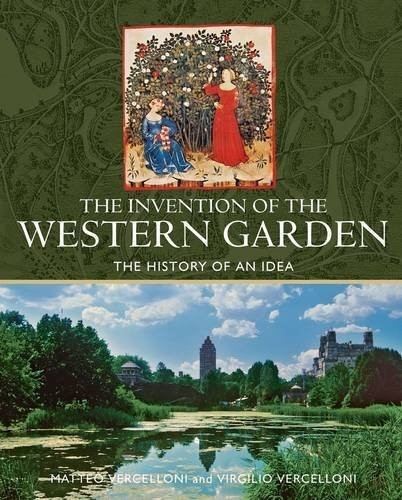The invention of the Western garden has ancient roots. Myth, semantics, terminology and ideas have blended to give us the idea today of what the western garden is. We need to look back to Mesopotamia, Hebrew and Greek for the origins of the idea. Hebrew gives us the word 'gan'eden' which has merged with the idea of 'salvation'. Ancient Greek gives us the word 'paradeisos', and this idea has evolved with the interpretations of wonder and magnificence. Through time, the 'garden' in the western world has developed as a concept of 'a paradise on earth', and cultures have since worked to create and reconstruct from soil, plants and weather, a paradise. European man, through time, has cultivated fields, woods and forest. We have spent hours cultivating vegetation; trying to decide whether to plant flowers, or not plant flowers, a border, or not a border. Why? Why has it become so important to take a small space, put a fence around it, and follow fashion; and give ourselves an infinite number of ways to create a paradise on earth? This book asks those questions, and explores how the garden has evolved, and gives examples, plans and pictures that show two thousand years of the garden. The predominance of the Renaissance Italian garden (the Garden of Belvedere in the Vatican by Donato Bramante spread throughout Italy, to France, Germany, Bavaria, Austria, Bohemia, the Netherlands, Spain and Portugal until the time of Louis XIVth when Versailles, Le Tuileries and Fontainebleau were formed as symbols of royal power. This style spread to German and Dutch towns until the English, in the 18th century, led by Lancelot Brown, and William Kent (from Bridlington) led the world in landscape gardening with the idea that a garden was the whole landscape - witness Kew Gardens, Kensington Gardens, Badminton House in Gloucestershire, Chiswick, Stowe, Ashridge Park in Hertfordshire, Beachborough in Kent, Hampton Court, and then in the 19th century Hyde Park, Buckingham Palace, Twickenham (Thames), and Wobury Farm in Surrey, and Bath. Suddenly there was the concept of the public garden - a garden for everyone; and then the American garden, where gardens were created on the edge of the urban world. We have always had the idea of the territory, where diversity finds a refuge. In this way abandoned railway viaducts are new urban hanging gardens (eg Dusmenil's viaduct in Paris) or people turn dilapidated places into green spaces in our cities (eg the High Line in New York). The widening of the concept of garden to that of landscape is now internationally recognised by the culture of urban planning.
There are no reviews for this book. Register or Login now and you can be the first to post a review!









